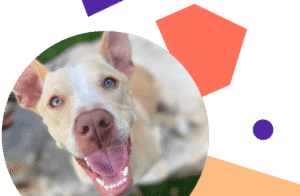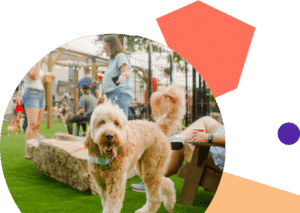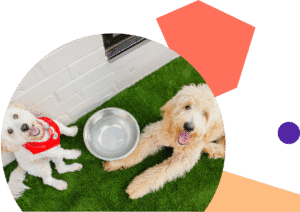It’s the summer of 2021, which means companies are starting to send people back to work. Everyone’s dogs have been loving the extra attention this year, but if your dog is dealing with separation anxiety as things get ‘back to normal’ in a post-COVID reality, we have some information and some tips for you.
We sat down with Katrina Kensington, Head Trainer and Owner at KeenDog Training in Charlotte, NC, to talk about some ways that you can help your dog get ready to spend time in the house by themselves again if you’re heading back to work soon.
But first – what is separation anxiety and how can you tell if your dog is experiencing it? The ASPCA lists a number of symptoms, including:
- Urinating and Defecating while left alone in the house
- Barking and Howling that only seems to be triggered by being left alone
- Chewing, Digging and Destruction, sometimes leading to escaping from a crate, room, or house, while you’re away
- Pacing while alone that does not occur while you’re in the house with the dog
If you’ve noticed any of these new behaviors after returning to work, your dog might have gotten used to having you around all the time and could be developing separation anxiety. An uptick in separation anxiety cases has been reported as people have started returning to work, but also, people not venturing out in public to socialize with their friends and other dogs this past year has created normal anxiety and non-socialization issues in dogs as well as their parents.
So what can you do to prepare for things returning to normal after COVID?
Katrina says that dogs have probably gotten used to following you around and being by your side most of the time, so the first thing you can do is begin creating some independence for both you and your dog at home in Charlotte. Even if you’re working from home right now or considering getting a new puppy, practice crating them while you’re at home. You can also do tethering work with your pup in the house – use a leash, attach it to a couch or a weight (that’s heavy enough that the dog can’t drag it around), and practice keeping some distance between you and the dog.
Dogs are very habituated to routines as well – Katrina says it’s important to start building a new routine that will more closely resemble the routine that you’ll have when you get back to work. For example, if you’ve been going for a walk in the afternoon but plan to take that walk in the morning or evening as you return to the office, shift your walk time to your new schedule now. The time while you’re getting ready in the morning is a great time to start getting your dog used to being in a crate, and then you can extend the time out to longer periods from there. A great way to incentivize the crate is with a high-value treat or food, raw beef rib bone, kong with frozen peanut butter, or any other treat that your dog loves that they don’t ordinarily get. But most importantly, start breaking the work from home schedule with your dog.
If you do go back to work, it’s important to desensitize your dog to you leaving the house in the morning and arriving at the end of the day. If you make a big deal out of your goodbyes at the beginning of the day, and have a huge celebration when you see your dog when you get home, your dog will associate these moments as being a big deal too.
For a lot of dogs that play well with others, dog daycare is a great outlet for a new atmosphere, other dogs, and attention from caring people. If you’re wondering if your dog would be a good fit for dog daycare in Charlotte, you can take them to a dog bar and park to see how they play well with other dogs, or schedule a compatibility session at Skiptown to see if your dog would make a great candidate to join the other pups that love to play during the day. And if you’re looking for a great dog training partner in Charlotte, Katrina has helped a lot of dogs and their parents build a great relationship with each other.





